Start 14-Day Trial Subscription
*No credit card required

Nate Lanier of Tree House Brewing Co.
BC caught up with Tree House Brewing Co. head brewer Nate Lanier to discuss his pre-brewing background as well as the meteoric rise of the brewery he co-founded. The Monson, Massachusetts-based brewery has found itself at the forefront of a burgeoning East Coast movement – the hazy IPA.
Named after a tree house left behind by a previous owner on the land where the brewery now stands, Tree House Brewing Co. is often filled to capacity due to the intense demand for any and all of its beers. But it is also a place to convene with nature and reflect – a pastoral paradise in a rural neighborhood.
When asked about Tree House’s role in the community, Lanier was effusive.
“We hope to be good neighbors, and we try to give back at every opportunity. We try to build and curate an environment of solace – a place where people can leave the stresses of the world behind for a while...”
Youth and the Path to Brewing
I grew up in a small town called Ware, Massachusetts where I spent most of my days as a kid running around the woods behind my house building forts, climbing trees and digging holes. I wanted to be an archaeologist or an astronomer. I’m not sure how any of this leads to co-founding and co-owning a modestly sized brewery, but here we are!
I owe my daily life to loving parents who instilled in me the idea that hard work and humility is all you need for a life of joy and virtue.
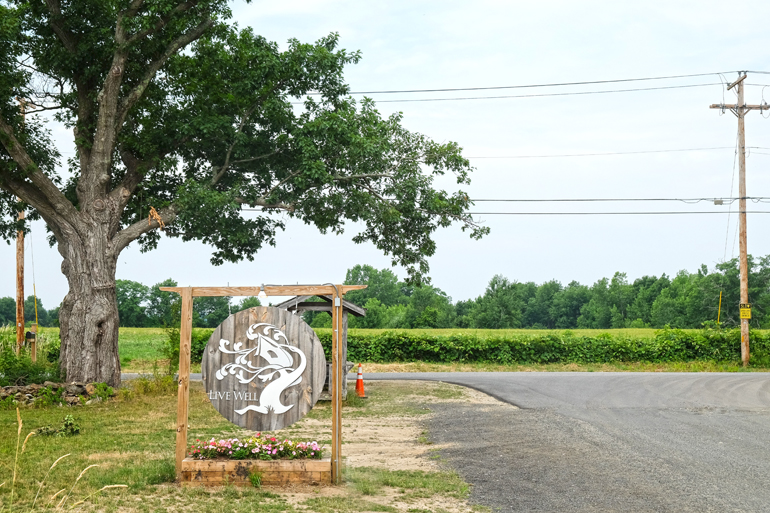
With Tree House Brewing Co., Lanier's goal was to create "a place where people can leave the stresses of the world behind for a while."
Discovering Craft
Very simply, the magic of a memorable drinking experience is what drew me to craft. Beer has this incredible power to bring people together and help put our troubles behind us for a short time. Some of my dearest memories are intertwined with a perfectly executed and presented pint of beer; I suppose I’m compelled by nostalgia and driven by the idea that deep focus and single-minded intent can collectively improve upon this liquid we all enjoy so much.
The “a-ha” Beer
Everyone has their “a-ha” beer, and mine was Trappistes Rochefort 8. It remains one of my favorites to this day, and I drink several every Christmas! I wouldn’t say it inspired me to get involved with the industry, but it certainly opened my eyes to the idea that a malt beverage could be conceived and presented in wildly different and interesting ways.
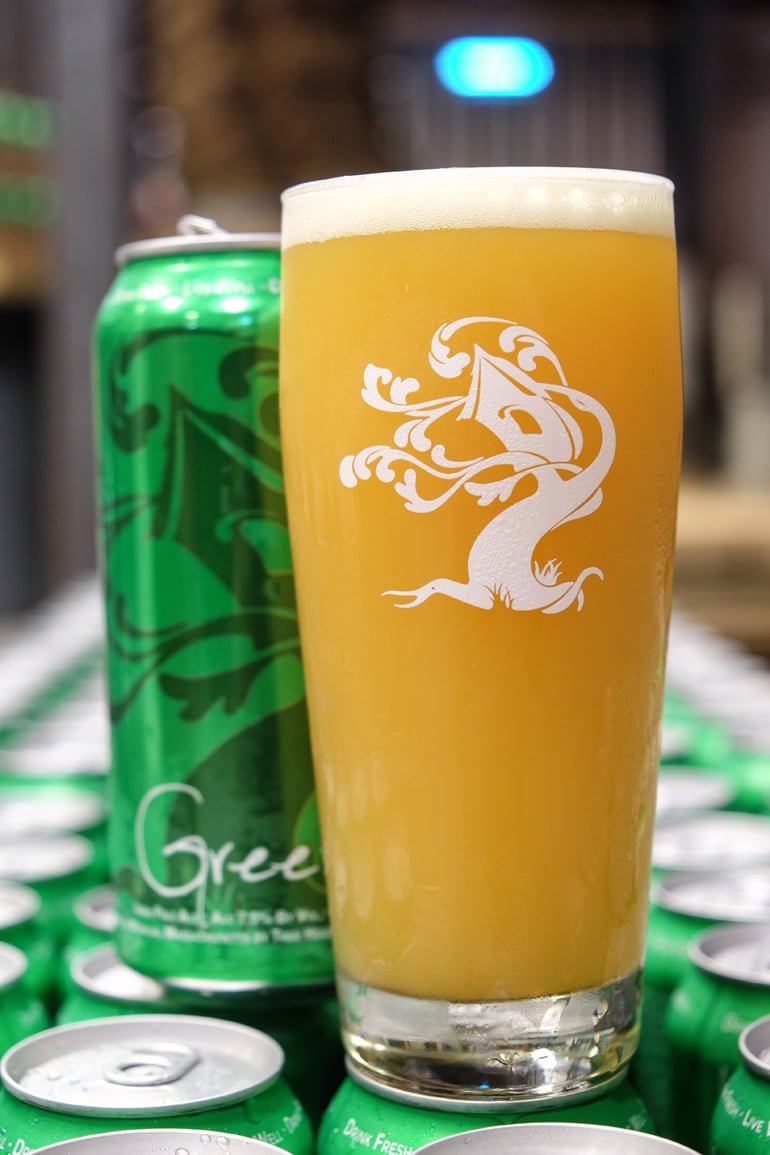 The Founding of Tree House
The Founding of Tree House
I have been culturing yeast and making pizza since my teens, but didn’t begin brewing until my mid-twenties (I’m 33 now).
I had been brewing at home for a while when my great friend Damien Goudreau (who also designed our logo) purchased a new home that just happened to have the most perfect 600-square foot brewing barn with a majestic, west-facing vista to enjoy. This allowed my weekend obsession to quickly turn into a full-fledged, seven-days-a-week obsession. I started making beer that was as enjoyable as anything I could buy, and a few of the early recipes (Julius, Green and Eureka) had become some of my very favorite beers. As the project picked up steam we (Damien Goudreau, Dean Rohan and Jonathan Weisbach – my other co-founders) had several friends enjoying the fruits of our efforts for free – even though with all of the equipment and raw materials we were a nearly five-figure, self-funded operation!
Green was one of Lanier's earliest homebrew recipes, and it has turned into one of the most sought after IPAs on the market.
In short, we founded Tree House Brewing because we felt we had something of value to contribute to the community. This idea continues to drive us to this day.
We opened our doors as a fully licensed brewery putting out about 20 gallons of beer a week in 2012, and we have been trying to get ahead of demand ever since. Our first year we brewed 60 BBLS. This year we will brew something like 12,000, and we still run out of beer every week. It’s insane.
The early days were times of great joy, and although we took our brew days quite seriously, we were always having fun: playing music, cooking on the grill and just enjoying these great times together. Tree House has given my life clarity and meaning in a way I could never have imagined five years ago.
Crafting a Recipe
I feel very in tune with my process and my selection of raw materials after brewing thousands of commercial batches in the past four years. In other words, I try to imagine a flavor profile and then reverse engineer it into a recipe that I think will achieve that flavor profile. This works most of the time, but I am still learning. All of our beers are a work in progress!
Despite his modesty, many of Lanier’s creations are among the most sought after beers in America. The brewery just celebrated its fourth anniversary, where Lanier and company debuted King JJJULIUSS, an imperial version of its popular year-round Julius, which sold out almost immediately.
Though consistency is a challenging cornerstone of brewing, making mild tweaks throughout the brewing process can sometimes create unintended and brilliant results.
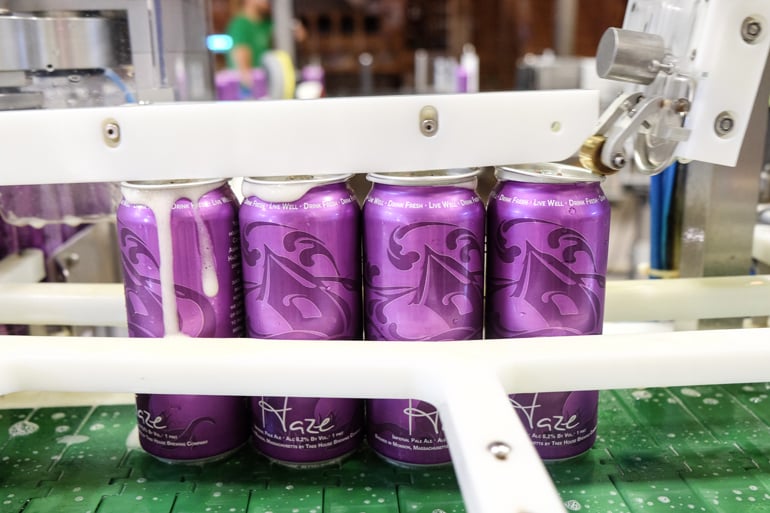
"I try to imagine a flavor profile and then reverse engineer it into a recipe that I think will achieve that flavor," Lanier says.
Picking Ingredients and Reverse Engineering
Being in tune with raw materials and educating your palate is the most important part of creating recipes and choosing ingredients. Tasting, imagining and thinking about how certain things will work together takes up a lot of my time. I think the more a brewer develops his or her palate, he or she will become a better brewer. I am always tasting, smelling, and eating raw materials. You can’t know what a dark crystal malt will contribute unless you eat some of it raw before including it in a recipe. When the beer is finished, you think back to the raw taste, and from there you just build your knowledge and experience… the key is to stay in tune at all times.
The Work Environment at Tree House Brewing
It’s extremely jovial! I liken it to a sports team finding success while having a good time off the field. The biggest source of tension is what is going to play on the radio that day; that’s serious business! One of the guys is a huge Miley Cyrus fan... can you imagine?
There is a serious energy to the room when everything is rolling, and, in my opinion, there is no greater environment in the world!
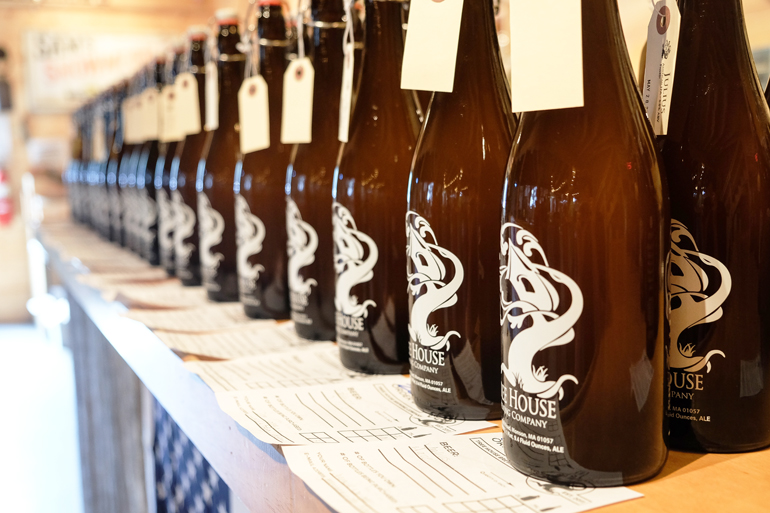
Despite IPAs being his calling card, Lanier loves to experiment with all kinds of styles.
Tales of Ales
Julius was one of the very first recipes I conceived of with a commercial brewery in mind, but not the first beer released. The first keg we sent to a restaurant was a classic balanced American Pale Ale in the vein of Sierra Nevada Pale Ale that we called Something New. A few others from the early days include That’s What She Said, a milk stout, Dirty Water, a gently hoppy blonde ale, and Old Man, a special bitter. The story of That’s What She Said hasn’t been told too often… My very first home brew was an attempt at a milk stout. I was in an impressionable stage of learning and had read that oxygenating your beer was good. The only problem was that my beer had finished fermenting. Long story short, I shook the carboy and destroyed my very first brew, but I still packaged it. It was terrible! I still have bottles of it, and I can only imagine how awful they are! At any rate, That’s What She Said exists as a bit of spite toward that first brew, and because I love milk stout.
The True Magic of Julius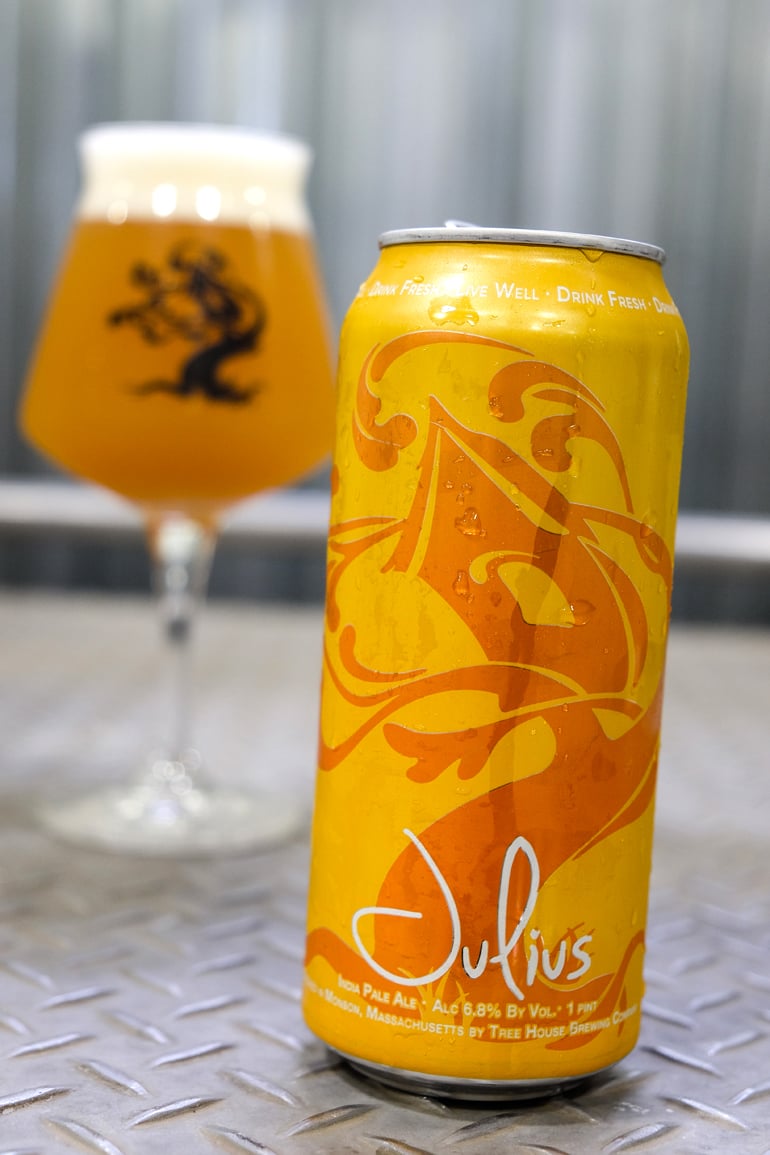
Julius is a beer that is designed to be immensely hop-saturated while never tiring the palate. I find it easy to brew a beer that makes a greater first impression than Julius, but it is exceptionally difficult to make a beer with this character that maintains drinkability pint after pint. To me, this is the true magic of Julius: It makes a tremendous first impression but never overstays its welcome. It has so much drinkability and an immense flavor profile.
Truly great beers seem to be imbued with a magical quality; perhaps you get an extra twinge of excitement when popping the top of the can, or you’re overcome with how the light plays through the citrine contents of the glass. Tree House and many of its fellow New England breweries appear to have unraveled the fundamental mystery behind what it takes to make such a beer. The Alchemist, Lawson’s Finest Liquids, Trillium, Tired Hands… What are these guys doing that could inspire someone to drive halfway across the country just for a six-pack?
With Julius, Lanier was able to create an "immensely hop-saturated beer that never tires the palate."
Hazy Days
Over the years I have worked hard to develop a process that results in a perfectly hop-saturated beer that retains high drinkability without tiring the palate. More often than not this results in a beer that is hazy and unfiltered. The focus is more on making beer that tastes great and not so much what it looks like. I’m ferociously resistant to the idea that a hoppy beer must be hazy to be great!
Is It Worth It?
My job has been immensely taxing both physically and emotionally for four unrelenting years. I know this is a candid and unromantic statement, but I feel compelled to share it for context of how wonderful the highs of the job can be when contrasted with the lows.
Early on with the new Monson brewery I had an absolutely terrible day with a mechanical failure forcing a late mash and an even later brew. I got home at 3 AM and was in a pretty terrible place. I happened to open my email (out of habit) and read a note from a gentleman that simply said, verbatim, “I don’t have much to say other than thank you for doing what you do. I love your beer.”
I’ll never forget that. It reminded me that despite the trials and tribulations of owning a brewery, we really are living the dream.
In a much lighter vein, I enjoy my day-to-day demands and being around the crew at Tree House Brewing. We all have a good time, and while we are often engaged in times of intense concentration and focus, there are just as many moments of levity and humor. At the end of the day I get to do what I love doing with the people who mean the most to me – what more could you ask for?
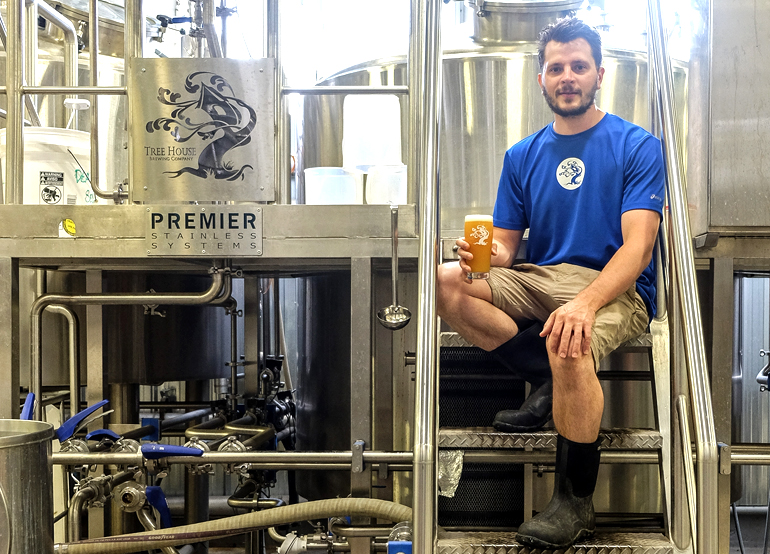
With expansion plans in the works for Tree House, Lanier shows no signs of slowing down.
Future Plans
I was a project manager / assistant at a construction firm before becoming a brewer. A lot of what I learned there has really helped with our Monson build-out, and more recently, our new brewery planned for Charlton.
In terms of distribution, our goal is to meet the demand we have locally first and foremost. Distribution to other states is not our focus at the moment. Our mission has always been to brew the best beer possible and serve it in its ideal condition. Everything else is secondary.
As Lanier walked us through life at the destination brewery he co-founded, it became clear that this was a man who is devoted to his craft and who cares about the community and his role within it.
While many people feel like being a head brewer at one of the most popular breweries in America would be a dream job, Lanier wears many different hats on a daily basis and puts in hard work day after day at the brewery. Yet he still loves what he does, and feels he is “living the dream.” That’s the kind of passion you want from a brewer.
Just like the foliage-fringed dwelling it’s named after, Tree House is a warm and inviting getaway in a beautiful, pastoral setting. Who knows, you might even find the meaning of life here, like Lanier has; the beers are that special. Just watch out for those lines – I’ve heard they can get pretty long.
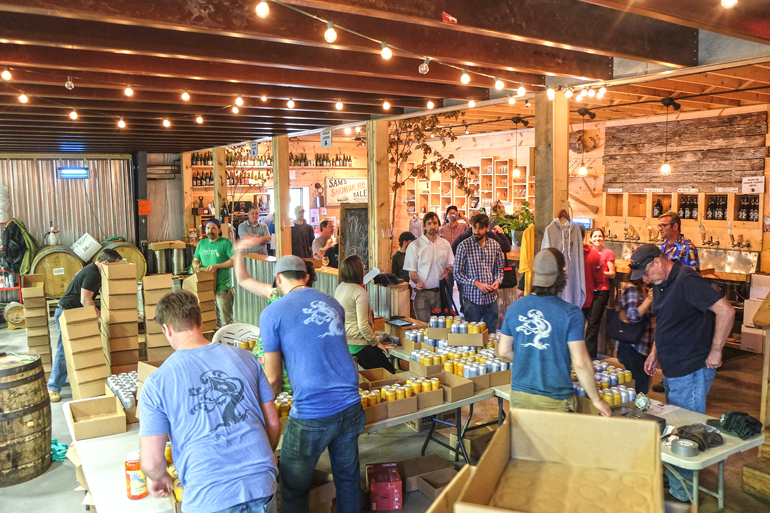
Photos courtesy Nate Lanier.



